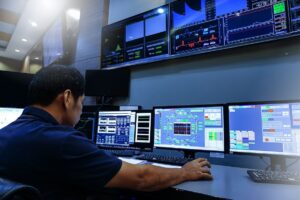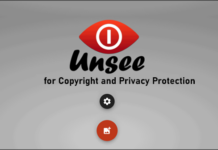
Guide About employee surveillance wfh will be described in this article. Businesses all over the nation are embracing WFH after turning remote for COVID-19. According to a recent Twitter announcement, most employees are never required to return to the workplace unless they choose to. Additionally, Google recently gave up on plans for a two million square foot workplace building.
Additionally, this pattern has increased demand for employee monitoring programmes. One of those solutions is Hubstaff. According to CEO and founder Dave Nevogt, the number of tryouts has tripled since March. Employers can benefit from employee monitoring software at the potential cost of alienating workers.
Is Employee Surveillance WFH a Good Idea
In this article, you can know about Is Employee Surveillance WFH a Good Idea here are the details below;
The majority of knowledge-based and white-collar work cannot yet be correctly monitored by employee monitoring software, which can also deceive managers if used improperly. Here are some details about what employee tracking software does, as well as its advantages and disadvantages.
What is employee monitoring software?
Employers can remotely watch their staff using their computers and mobile devices thanks to employee monitoring software.
This frequently entails viewing their email and calendars, taking screenshots or videos of their screens, monitoring their whereabouts and keystrokes, as well as keeping tabs on which websites and apps they visited and for how long.
It then compiles this data into reports on employee efficiency and has the ability to send alerts based on worker behaviour.
Ifeoma Ajunwa, an associate professor of labour relations and law at Cornell University, claims that employee surveillance was already increasing in popularity before Coronavirus.
In a recent Accenture poll, 62% of executives stated that their organisations use technology to monitor employees.
A 2018 Gartner survey of businesses globally found that 22% track employee movement, including their physical location and mouse activity, and 17% keep an eye on how they use their work computers.
The coronavirus appears to have expedited preparations for employee surveillance.
For instance, Jarrod Easterwood, Avuity’s head of marketing and partner relations, claimed that the last two months have been the busiest of his professional life.
His business manufactures occupancy sensors that communicate with software to display the location of employees in workplaces.
Additionally, the accounting and consulting company PwC recently created an app that tracks how close employees are to one another and alerts HR when an employee comes into contact with someone who is infected.
According to Dennis Kwan, CEO of TRACEsafe, which creates badges that track workers’ locations and proximity to one another, “this is the new standard for protecting employees’ safety.”
“It’s like having a safety policy, like a sexual harassment policy, like a kid safety policy,” the speaker said.
What are employees rights?
Data safety, privacy, and security are areas of expertise for lawyer John Tomaszewski.
He advises employers who wish to monitor workers online to become acquainted with state and federal wiretap laws, as well as the Electronic Communications Privacy Act and the Stored Communications Act.
However, most experts agree that when they accept a job, workers give up their rights to consumer privacy protections. In most states, the only real legal restriction on employer surveillance is the requirement to notify employees when they are being monitored.
“Employees are in a challenging situation.
Companies have expressed worry that employee data is exempt from consumer privacy laws as they emerge, according to Lee Tien, senior staff attorney at the Electronic Frontier Foundation.
According to Hubstaff’s Nevogt, his software doesn’t violate employees’ private because they are aware that they are being watched.
According to Ajunwa, “Employers really have free rein in terms of the policies they can implement and the tools that they can use.”
“I don’t have faith that these measures will ever end because you already have limitless worker surveillance and are implementing new, more intense surveillance without any restrictions.”
What are the benefits of employee surveillance to companies?
Increased productivity, better data for hiring and rewarding employees, and defence against wrongful termination lawsuits are just a few advantages of employee monitoring software that Capterra lists for companies.
Through employee surveillance, businesses have learned that social interaction is associated with higher sales and reduced turnover.
A pharmaceutical firm built a larger cafe area for workers to congregate, and one call centre offered employees a shared 15-minute coffee break. Eva Sage-Gavin, who oversees Accenture’s global talent and organisation practise, stated that “we’ve seen that [workforce data] could increase revenue by 6.4%.” This has inspired employees to embrace ethical data use.
What are the drawbacks to employee surveillance?
Destroys trust and harms engagement
Theoretically, using employee monitoring software might encourage workers to appear more efficient while they are at work. However, research indicates that productivity depends on employee engagement. Trust is also a prerequisite for employee engagement.
Employees are likely to develop a mistrust of management as a result of surveillance showing a lack of confidence in the workforce.
Businesses might want to consider twice before investing in software that could undermine employee engagement, which costs US organisations about $300 billion annually.
Unnecessary conflict between employees and managers can result from employee surveillance.
Adam Satariano of the Times put Hubstaff to the test with his superior. Adam sent his supervisor a screenshot of a virtual fitness instructor setting up in her living room after forgetting to log out of Hubstaff. He thought it was “embarrassing and intrusive” and was concerned Hubstaff might email screenshots of his personal or financial data.
Less than a third of executives who use worker surveillance, according to the Accenture survey, said they are sure they are handling the data responsibly. The majority of respondents (54%) expressed worry that employee data may also be at risk due to recent scandals involving data privacy.
Provides inaccurate and misleading information
Employees will spend less time on non-work tasks because they are aware they are being watched, according to the promise of employee surveillance.
Additionally, superior, less biassed statistics will be available to managers for performance reviews.
For instance, Hubstaff calculates each employee’s daily productivity number based on how much time was spent typing or using the computer mouse.
- The issue is crystal clear.
- Being able to type and use a mouse is a really bad substitute for knowledge work.
- For example, it does not consider phone conversations to be work.
- Spending hours on Twitter might count as employment if you work in marketing.
- If you’re a writer, you ought to read more often than you compose.
- It’s possible for an engineer to observe tutorials for hours.
- All of this is useful time in actual life.
- However, it seems like fun to a programme.
Misunderstands productivity
Software engineer Christine Price told me, “At a previous job, I purposely Googled things like ‘what to do about crushes on your supervisor’ in the hopes we had some sort of surveillance software.” “Either we didn’t, or he was a true expert,” someone said. erroneously views work
Adam, a NYT journalist, claimed that in an effort to boost his productivity score, he began logging in earlier, read fewer sports stories, and stopped reading private communications on his laptop after he began the Hubstaff experiment.
His boss observed that the Hubstaff metrics “clearly did not catch when he was reporting and talking to sources.” Thus, it was unimportant, at least in terms of how we operate. Employee monitoring software might be able to offer a comparatively precise productivity estimate for sales teams or call centres.
Employers should still compare this to the expenses in terms of engagement and trust.
However, there is really very little chance that employee surveillance will pay off for knowledge employees.
A better way to boost productivity
The assumption that your staff is lax and requires continuous surveillance from their robot overlords will not lead to increased employee engagement. Instead, assume that your staff is highly motivated and seeking out methods to accomplish more with less effort. This fosters interdependence and gives workers the confidence to alert you to any obstacles to their output.
For many workers, for instance, a lack of Focus Time is a major roadblock. When Slack messages and talks keep interrupting your work, it’s difficult to accomplish anything. There are more gatherings than ever for us all, and many of us are getting tired of Zoom. You should consider conducting a schedule audit of your staff. Particularly in uncharted terrain like widespread WFH, employee monitoring software can be alluring.
It tends to alienate workers because it can’t yet deliver on its promises. Instead of doing something that fosters a more antagonistic relationship between employees and managers, collaborate with your staff to find methods to be more productive as a whole.











